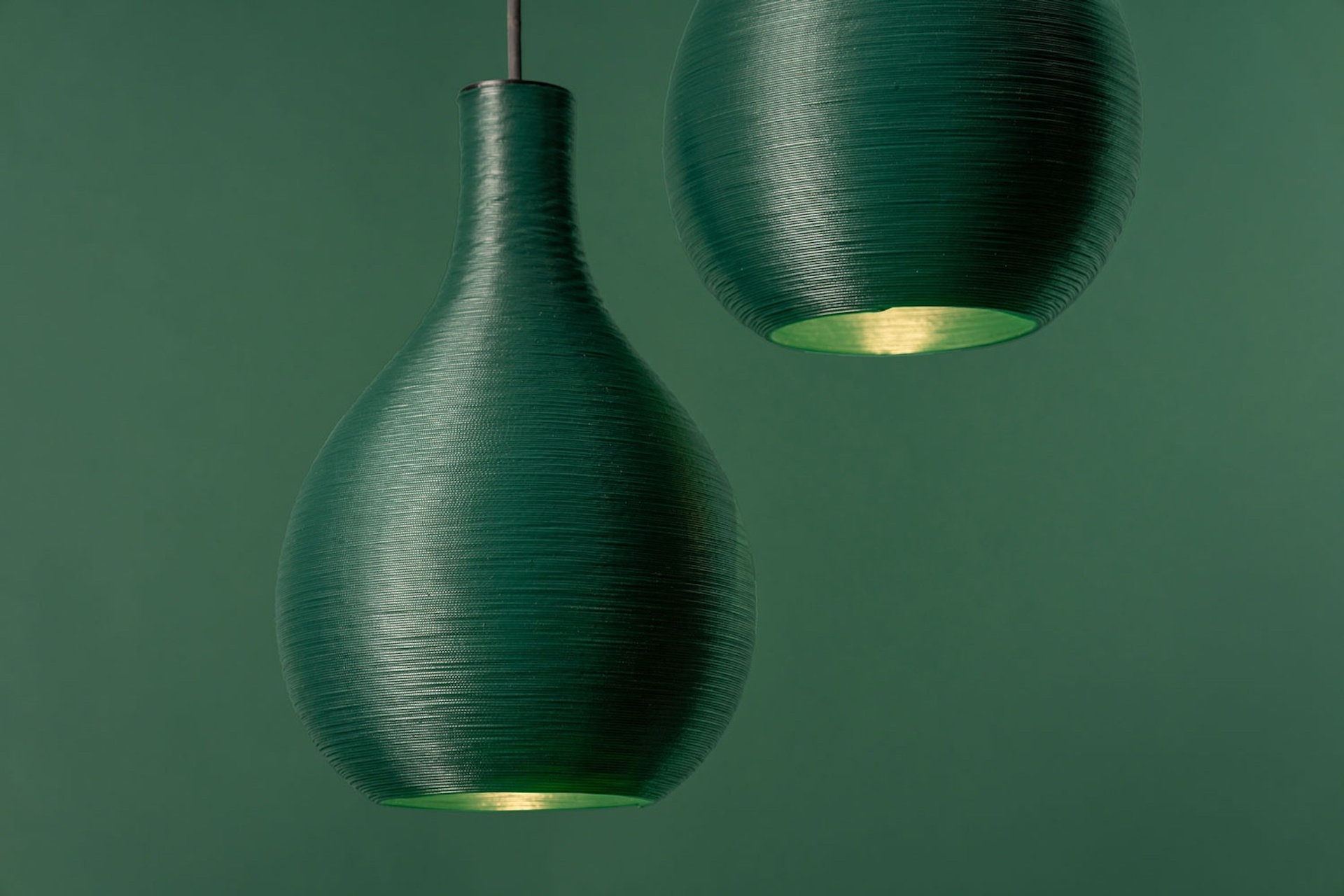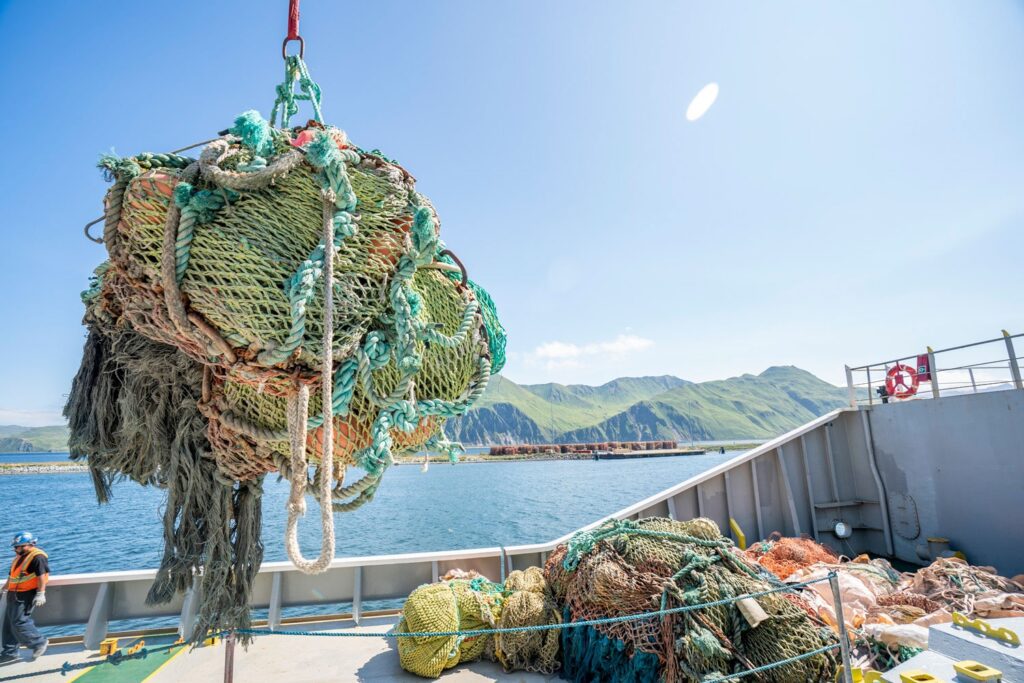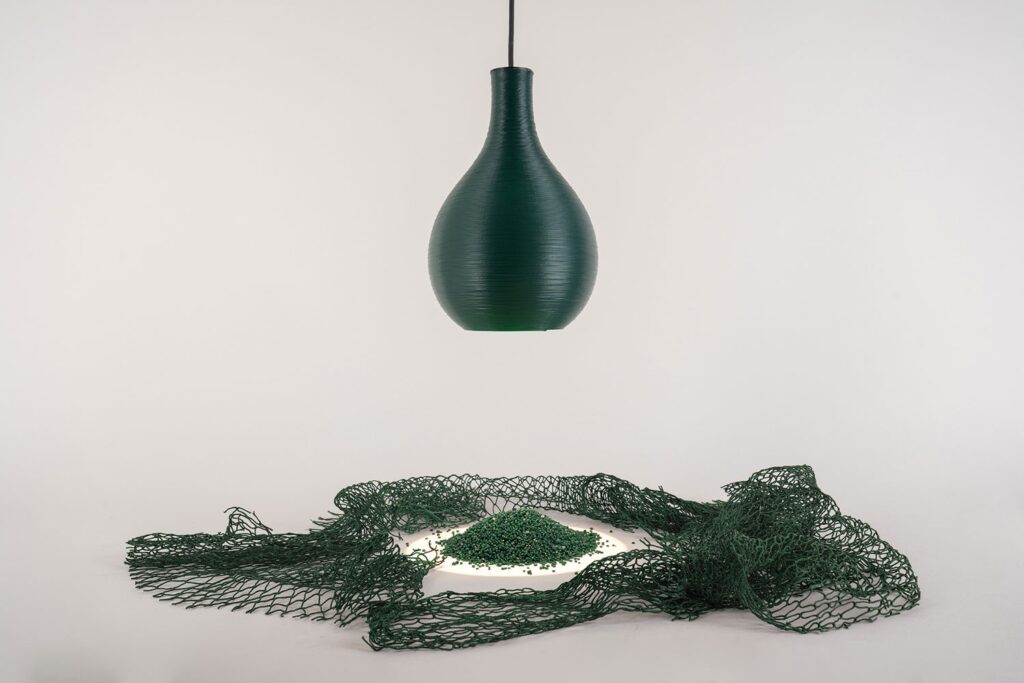
09 Sep LightArt Transforms Reclaimed Ocean Plastic into New Pendants
Each year, over nine tons of plastic end up in the world’s oceans. For designers, this presents an opportunity to do what they do best—solve problems—and when it comes to upcycling trash, one brand is at the forefront of innovation.
Seattle-based LightArt first developed its multi-award-winning Coil Collection by transforming recycled material waste into stylish, 3D-printed lighting fixtures. Now, the brand is taking its environmental impact even further—beyond its factory and out to sea. “We wanted to challenge ourselves and ocean plastics were a clear next challenge,” says LightArt director of research and development Edwin Vice. “We have an aggressive sustainability mission, and these pendants represent a greater step in the Coil Collection’s evolution.”
Seeking a company that shared their sustainability and transparency values, LightArt teamed up with Oceanworks. “When LightArt approached us, we were very pleased they were already incorporating recycled materials into their products,” says Oceanworks co-founder and chief executive officer, Vanessa Colman. “We’re always on the lookout for like-minded partners to help tell these stories and get the word out about recycled materials.”
After testing several materials from Oceanworks to create the latest edition of the Coil Collection, LightArt landed on polypropylene, which lent itself most readily to their 3D process. The material comes from waste within 31 miles of the coastline as well as near-shore plastic gathered close to land. This “marine” polypropylene is more translucent than that of the brand’s internal waste stream material, resulting in fixtures with an atmospheric, incandescent glow.

The ocean-sourced Coil Collection debuts with two new fixtures. Sea Foam is a round pendant in a soft white color that is made from discarded items such as single-use plastic bags and water bottles. The spherical shapes, available in large (7.5”d) and small (6”d) sizes, can be specified as a single pendant or a clustered arrangement. The teardrop-shaped Seagrass gets its sea kelp-like deep green hue from near-shore plastics that include fishing nets, trawls, and ropes, retaining the rich color of the materials’ former life. The shade measures 16”h and 7.5”d. Both styles can be used as single pendants to illuminate a small area, used in a cluster to create more of a chandelier feeling, or placed in a row, such as over a dining table. The possibilities are as vast as the oceans themselves. These pendants, and the process of creating them, serve as a roadmap for sustainable design—one that’s constantly evolving. “We’re trying to do things in an honest way where we can continue to make them better. That’s exciting because it pushes the bar for the next thing down the road,” says founder Ryan Smith.
Visit lightart.com for more information.



